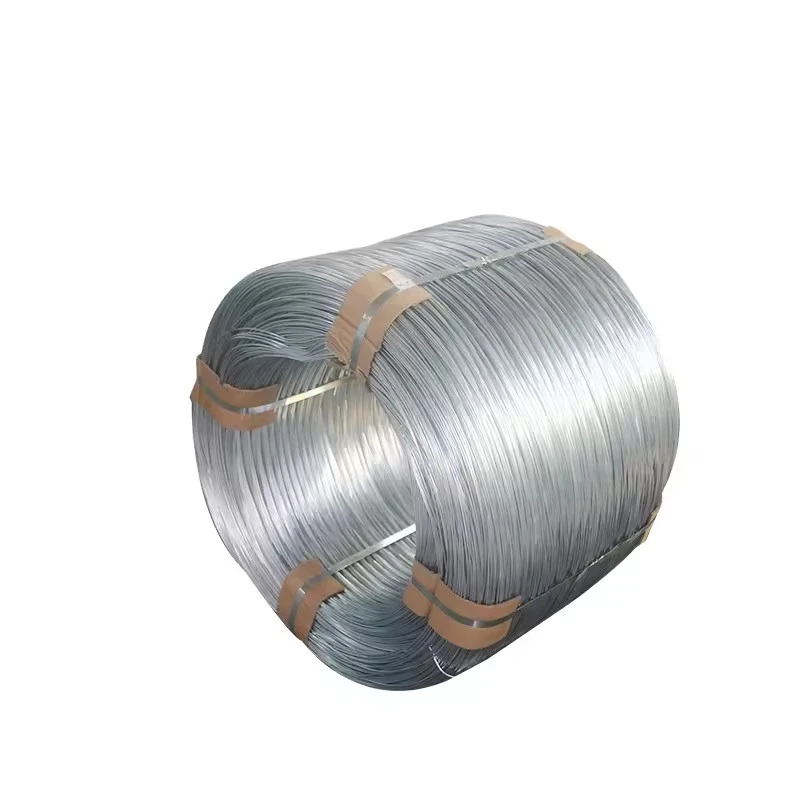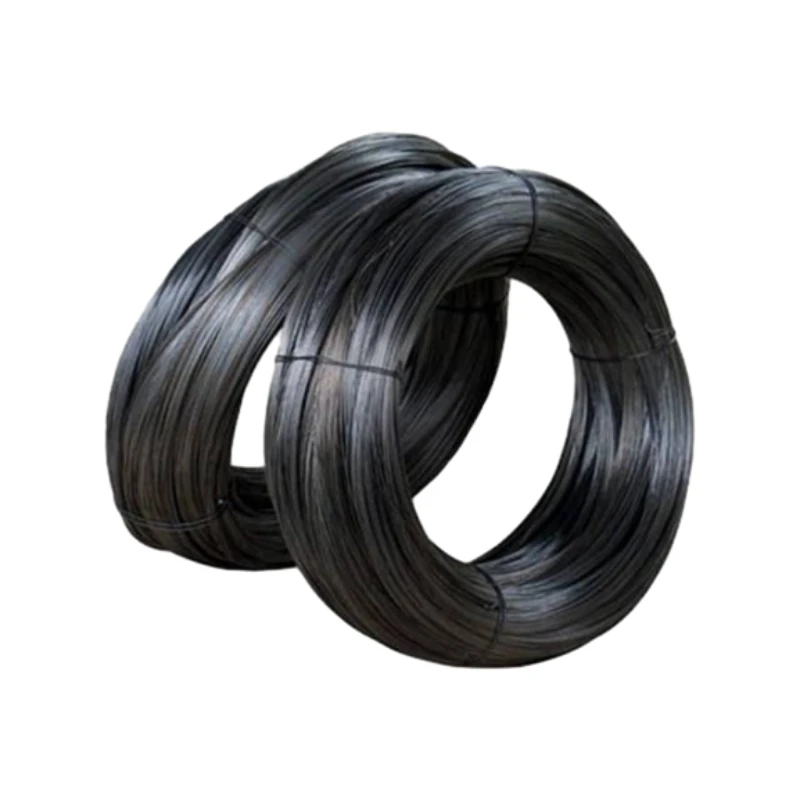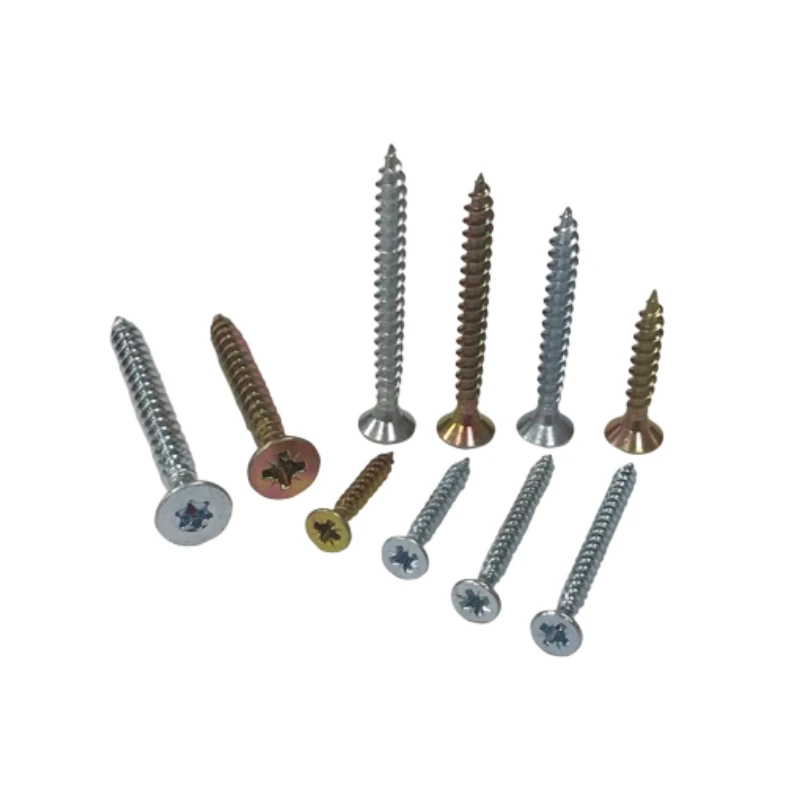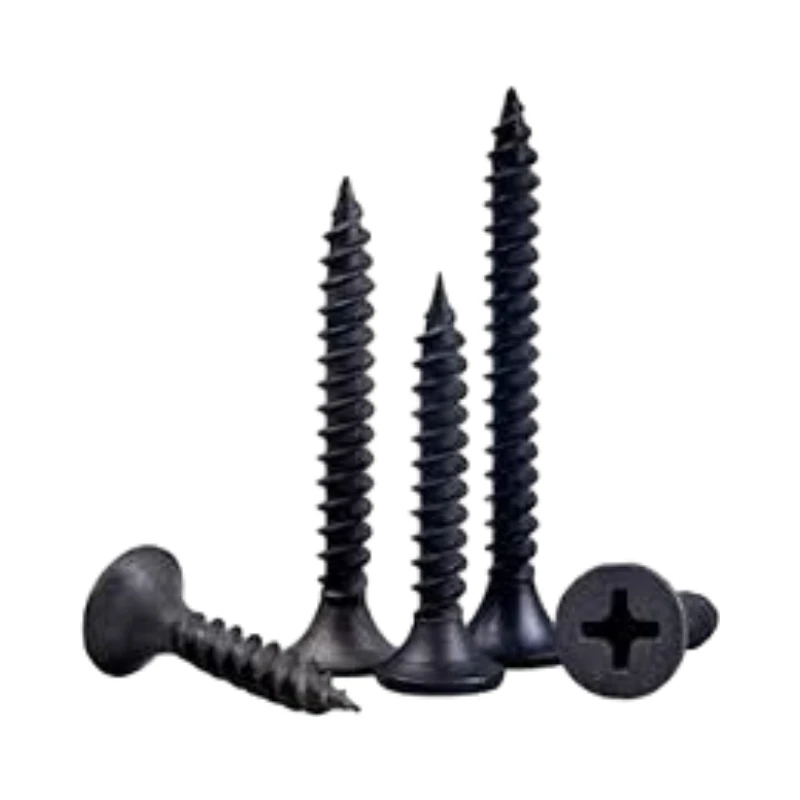
Talk With Us
+86-13601661296
Email Address
admin@sxjbradnail.comIndustrial Staples – Stainless, Heavy‑Duty, Pneumatic
An Insider’s Take on Industrial Staples for Upholstery and Beyond
If you spend time on factory floors (I certainly do), you know the humble staple isn’t so humble. The 16GA GS16 Staple from Lixinzhuang Industrial, Dingzhou, Hebei, China has been cropping up in furniture plants I visit. People like it because it’s steel, chisel point, and frankly, forgiving in real-world use. Many customers say jam rates dropped a bit; operators smile more. That’s telling.
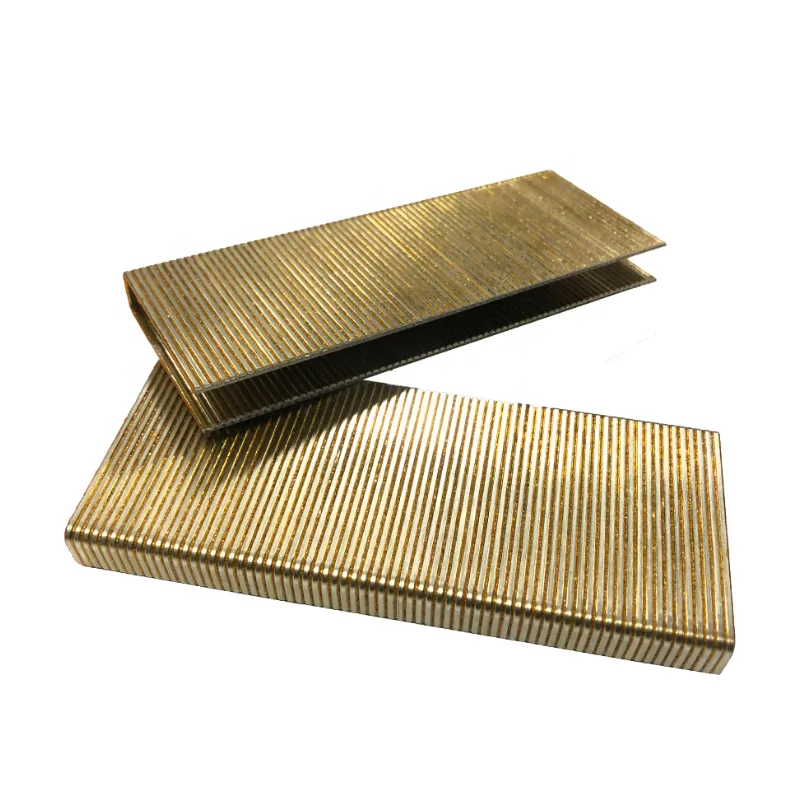
Market trends I’m seeing
There’s a quiet shift toward coated steel and selective stainless for high-moisture builds (marine cushions, resort furniture). Also, traceability is a big deal—QR-coded cartons, heat numbers on wire coils. And yes, sustainability: low-VOC coatings and tighter scrap recovery. In fact, it seems procurement teams now weigh total cost of ownership over sticker price—tool wear and rework counts.
Technical specifications (16GA GS16)
| Parameter | Spec (≈, real-world use may vary) |
|---|---|
| Gauge / Wire Ø | 16GA ≈ 1.6 mm |
| Crown width | ≈ 11.2 mm (≈ 7/16 in) |
| Leg lengths | 6–25 mm standard; customs on request |
| Material | High-carbon steel; 304 stainless optional |
| Point type | Chisel point for clean penetration |
| Finish | Bright; Zn galvanized 8–12 µm; or 304 SS |
| Tensile (wire) | ≈ 1,200–1,600 MPa |
| Standards reference | ASTM F1667 dimensions/hardness; RoHS compliant |
| Packaging | ≈ 10,000 pcs/box; private label available |
Manufacturing process (how they’re made)
Materials: drawn high-carbon steel wire (or 304 SS). Methods: precision wire forming → strip collation → chisel-point shearing → heat treatment (for carbon steel) → surface finish (bright/galv) → inline camera checks → packing. Testing standards: dimensional checks per ASTM F1667, coating thickness via XRF, salt-spray to ISO 9227. Typical service life: indoors ≈ 5–10 years; coastal/marine with stainless can stretch well beyond—depends on environment, of course.
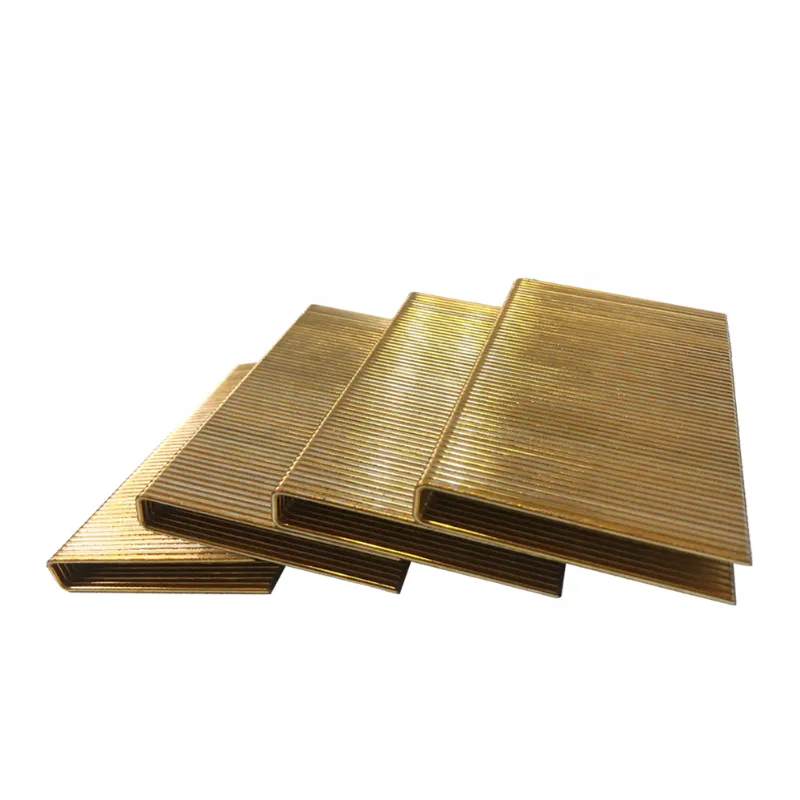
Applications and real-world feedback
The obvious use is upholstery—sofas, chairs, headboards. But shops also run these in cabinet backs, light frames, packaging crates, acoustic panels. The chisel point helps when you’re driving into mixed substrates (plywood + foam + fabric). One furniture line manager told me pull-outs dropped after switching, likely due to tighter leg-length consistency. To be honest, that matches what I saw on their QA board.
Industrial Staples with galvanized finish typically hit ≥ 72–120 h in salt spray (ISO 9227) and stainless can surpass 500 h. Pull-out in hardwood plywood is competitive—your base material matters more than people think.
Vendor comparison (what buyers ask me privately)
| Criteria | SXJ (GS16) | Vendor M | Vendor N |
|---|---|---|---|
| Lead time | ≈ 7–15 days | 20–30 days | 15–25 days |
| MOQ | 100–200 boxes | ≥ 500 boxes | ≈ 300 boxes |
| QC & AQL | AQL 1.0, camera inspection | AQL 2.5 | Basic sampling |
| Certifications | ISO 9001; RoHS | N/A | ISO 9001 |
| Traceability | QR-coded cartons | Batch only | Batch only |
Customization and case notes
Custom crown, leg length, and finishes are common; private-label cartons for big-box programs are routine. A sofa plant in Vietnam reported a 28% drop in gun jams after switching to Industrial Staples with tighter collation. Another client in marine seating moved to 304 stainless legs for dockside humidity—costlier, yes, but rework basically vanished.

Certifications, testing, and what to ask suppliers
Look for ISO 9001, dimensional conformance to ASTM F1667, and salt-spray data per ISO 9227 (ask for the report, not just a claim). For timber work, EN 14592 guidance helps. And yes, ask where it’s made—here it’s Dingzhou, Hebei—which has a long fastener-making tradition.
References: [1] ASTM F1667; [2] ISO 9227; [3] ISO 9001; [4] EN 14592.
- ASTM F1667 – Standard Specification for Driven Fasteners: Nails, Spikes, and Staples.
- ISO 9227:2017 – Corrosion tests in artificial atmospheres – Salt spray tests.
- ISO 9001:2015 – Quality management systems – Requirements.
- EN 14592:2008+A1:2012 – Timber structures – Dowel-type fasteners.
-
Everything You Need to Know About T Head Brad Nails | Global Fastening SolutionsNewsNov.22,2025
-
T Brad Nails – Precision Fasteners for Fine Woodwork & Industry ApplicationsNewsNov.22,2025
-
Straight Brads: The Small Fastener with Big Global Impact | SXJ StapleNewsNov.21,2025
-
The Essential Guide to Straight Brad Nails for Modern Construction and DesignNewsNov.21,2025
-
Essential Guide to Steel Brad Fasteners: Uses, Specs & TrendsNewsNov.20,2025
-
Durable and Reliable SS Brad Nails for Every ApplicationNewsNov.20,2025

